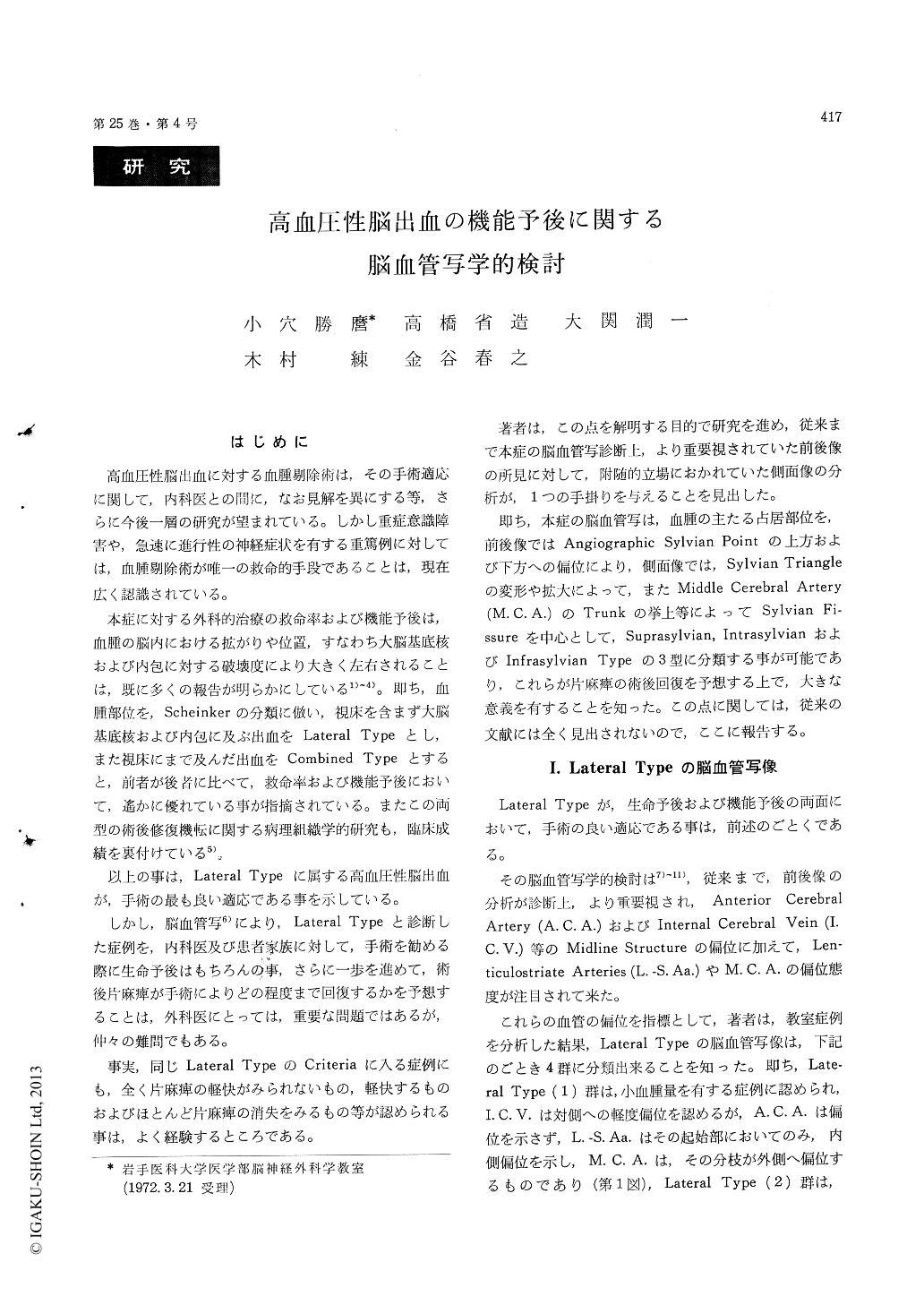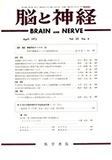Japanese
English
- 有料閲覧
- Abstract 文献概要
- 1ページ目 Look Inside
はじめに
高血圧性脳出血に対する血腫剔除術は,その手術適応に関して,内科医との間に,なお見解を異にする等,さらに今後一層の研究が望まれている。しかし重症意識障害や,急速に進行性の神経症状を有する重篤例に対しては,血腫剔除術が唯一の救命的手段であることは,現在広く認識されている。
本症に対する外科的治療の救命率および機能予後は,血腫の脳内における拡がりや位置,すなわち大脳基底核および内包に対する破壊度により大きく左右されることは,既に多くの報告が明らかにしている1)〜4)。即ち,血腫部位を,Scheinkerの分類に倣い,視床を含まず大脳基底核および内包に及ぶ出血をLateral Typeとし,また視床にまで及んだ出血をCombined Typeとすると,前者が後者に比べて,救命率および機能予後において,遙かに優れている事が指摘されている。またこの両型の術後修復機転に関する病理組織学的研究も,臨床成績を裏付けている5)。
1) It is exclusively important for neurosurgeons to anticipate the postoperative recovery from hemi-motor disturbance in patients with the lateral type of hypertensive intracerebral hemorrhage.
2) This paper is to present the relationship bet-ween the postoperative improvement of hemimotor disturbance and the angiographic classification of this disease.
3) 50 cases of the lateral type were classified into three groups?Suprasylvian, Intrasylvian & Infrasylvian Types-chiefly on the basis of interpr-etation of the lateral view of cerebral angiograms.
4) Of these cases 16 were of the Suprasylvian Type, 18 of the Intrasylvian Type & 16 of the Infrasylvian Type.
5) The postoperative improvement of hemimotor disturbance estimated at the period of three months after operation was excellent in the Suprasylvian Type, fair in the Infrasylvian Type & poor in the Intrasylvian Type.
6) The above result was not related to the sur-vival rate & hematoma volume in the Suprasylvian, Intrasylvian & Infrasylvian Types, but related to the anatomical localization of hematoma.
7) The anatomical study of the degree of de-struction to the basal ganglionic nuclei & the internal capsule using postmortem specimen of the hypertensive intracerebral hemorrhage showed thata part of impairment of the internal capsule was demonstrated in the specimens of the Suprasylvian & Infrasylvian Types and, on the other hand, the complete destruction of the internal capsule was revealed in the specimen of the Intrasylvian Type.
8) From the anteroposterior projection of cere-bral angiograms in this disease the lateral type was divided into four groups--Lateral Type (1), Lateral Type (2), Lateral Type (3) & Lateral Type (4)-according to the displacement of the lenticulo-striate arteries, the middle cerebsral artery & the angiographic sylvian point.
9) All of the cases of the Lateral Type (1),Lateral Type (3) & Lateral Type (4) cases belonged to the Intrasylvian, Infrasylvian & Suprasylvian Types, respectively. But in the Lateral Type (2) the cases of Suprasylvian, Intrasylvian & Infrasylvian Types were coexisted.
10) The postoperative improvement of hemimotor disturbance was poor in all cases of the Lateral Type (2) regardless of their types, Suprasylvian, Intrasylvian or Infrasylvian. In other words, the Lateral Type (2) cases have only a poor recovery from the hemimotor disturbance postoperatively even if they belong to the Suprasylvian or Infra-sylvian Types.

Copyright © 1973, Igaku-Shoin Ltd. All rights reserved.


